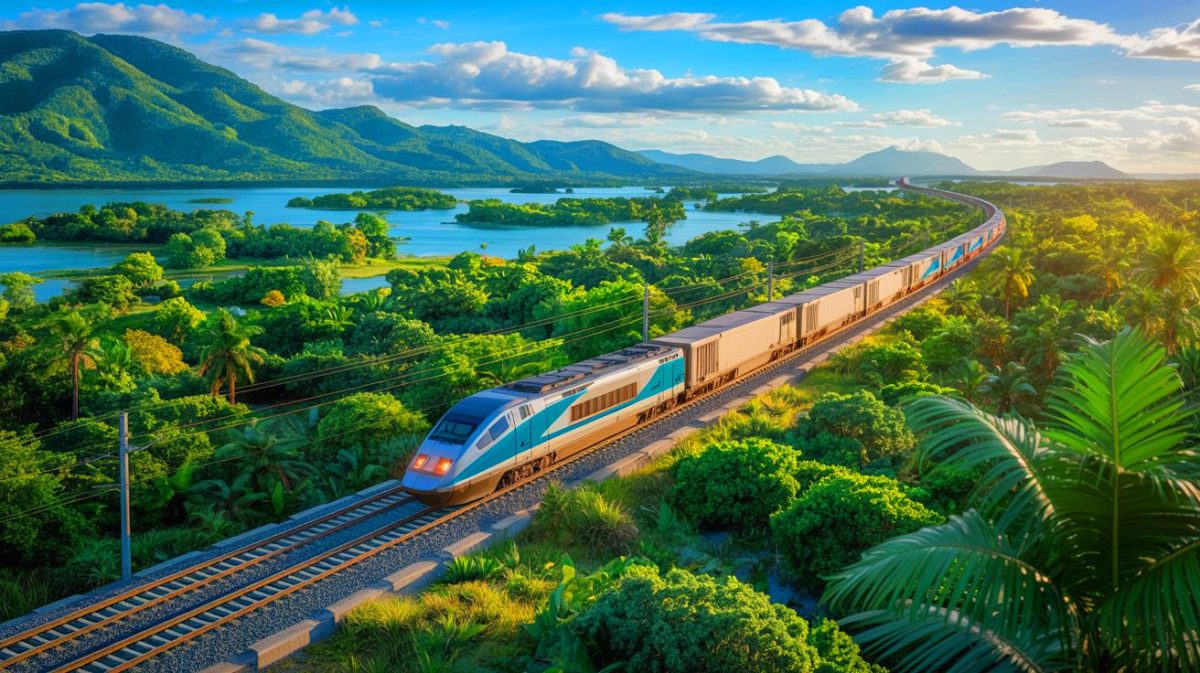| IN A NUTSHELL |
|
In a bold move set to revolutionize transportation between the Pacific and Atlantic Oceans, Mexico is resurrecting an ambitious vision that has captivated the world for centuries. The Interoceanic Corridor of the Isthmus of Tehuantepec (CIIT) promises to create a high-speed freight rail link that could transform trade, industry, and regional economics. However, this vision is not without its challenges, as environmental and social concerns loom large. As the plan unfolds, it raises important questions about progress, sustainability, and the balance between development and conservation.
The Historical Vision for a Trans-Isthmus Link
The idea of connecting the Pacific and Atlantic Oceans through Mexico’s Isthmus of Tehuantepec is not new. Hernán Cortés first proposed the concept in 1520, envisioning a transformative passageway where two seas meet. Despite its promising potential, the project remained dormant for centuries. Historical attempts to create alternative routes, such as the ill-fated Scottish venture in Darién and the perilous French-led Panama Canal dig, hinted at the immense challenges involved.
Yet, Mexico’s Isthmus offered a flatter and more direct route, making it an attractive option each time. The vision was revived when former President Andrés Manuel López Obrador announced the CIIT, a US$ 5 billion initiative. This modern infrastructure project includes a state-of-the-art freight railway, expanded ports, and advanced customs systems, aiming to handle a million containers annually. As the plan gains momentum, it’s clear that this historical vision is closer to becoming a reality than ever before.
Economic Opportunities and Strategic Advantages
The CIIT is poised to provide substantial economic benefits and strategic advantages. By linking the Pacific and Atlantic through a high-speed freight rail, the corridor could significantly shorten shipping times, offering a critical alternative during Panama Canal bottlenecks. This advantage is crucial for shippers seeking to hedge against chronic congestion issues in Panama.
Moreover, the corridor is expected to stimulate economic growth in Mexico’s southern regions, traditionally less developed than the north. By attracting industries and facilitating trade, the project could create jobs and foster economic resilience. The potential to become a major logistics hub brings opportunities for investment and development, positioning Mexico as a pivotal player in global trade dynamics.
Environmental and Social Challenges
Despite its potential benefits, the CIIT faces significant environmental and social challenges. The region’s rich biodiversity, including rainforests and mangroves, could be at risk. These ecosystems play a crucial role in maintaining ecological balance, and any disruption could have far-reaching consequences. Indigenous homelands are also at stake, raising concerns about the impact on local communities and their way of life.
Environmentalists and social activists argue that the costs to nature and culture may outweigh the economic gains. They emphasize the need for comprehensive environmental impact assessments and community consultations to ensure that development proceeds sustainably. Balancing economic interests with ecological preservation and social justice is crucial to the project’s long-term success and acceptance.
The Future of the Interoceanic Corridor
As Mexico moves forward with the CIIT, the world watches with anticipation and concern. The project’s success hinges on its ability to navigate complex challenges while delivering on its promises. Effective governance, transparent decision-making, and stakeholder engagement will be key to addressing the multifaceted issues at hand.
The CIIT represents a bold step toward fulfilling a centuries-old dream, offering a potential game-changer in international trade and regional development. However, its implementation must be carefully managed to ensure it does not come at the expense of the environment and local communities. As the plan unfolds, it prompts us to reflect on the broader implications of such ambitious infrastructure projects.
In an era where sustainability and innovation are paramount, the Interoceanic Corridor of the Isthmus of Tehuantepec invites us to consider the delicate balance between progress and preservation. Will this ambitious endeavor succeed in transforming trade routes and economies, or will it falter under the weight of its challenges? The answers may shape the future of transportation and global commerce.
Did you like it? 4.5/5 (30)










Wow, this sounds like a game-changer for global trade! 🚂
How will this project affect the local communities in the Isthmus of Tehuantepec?
Hope they consider the environmental impacts before proceeding. 🌿
With such a huge project, I wonder how long it’ll take to complete?
Will this new rail corridor be faster than the Panama Canal route?
Is there any plan to involve indigenous communities in the decision-making process?